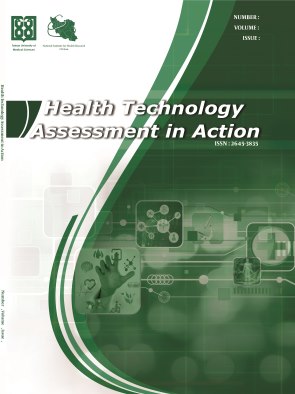2024 CiteScore: 0.4
eISSN: 2645-3835
Chairman & Editor-in-Chief:
Alireza Olyaeemanesh, MD, PhD.
Articles in Press
Context: Disaster management is one of Iran’s primary health care (PHC) areas, and it is becoming increasingly important due to continuous disasters.
Objectives: This study aimed to develop a national accreditation model for disaster management in Iran’s PHC system.
Methods: The primary model was developed by reviewing the literature/documents and organizing specialized interviews with the experts. Then, the Delphi technique was used to reach a consensus among experts on the developed model. The primary standards were assessed from the experts' perspective based on "importance" and "feasibility" criteria on a 9-degree scale. In two rounds of Delphi, 14 out of 16 experts completed the questionnaires.
Results: The final developed model emphasizes providing required resources, enhancing the preparedness of health centers and households, taking appropriate actions in three phases of disaster, and evaluating the disaster management program.
Conclusions: Considering the strong consensus among experts on the Delphi stage, this model can improve disaster management performance.
The future is something that people can design and shape with their purposeful actions, and it is the only opportunity we have to pursue our ideals, dreams, goals, strategies, and so on. The pulsating changes are the heart of the future, and our surrounding world is also a dynamic, uncontrollable world with extensive communications and full of uncertainty. The crises around us today are the result of not paying attention to them and not considering the speed of these changes. It should be noted that awareness of future changes requires future studies to reduce threats and increase opportunities that enable us to perform appropriately at future events. Considering the extensive history of changes in the healthcare system, it can be expected that we will see more changes in the future, which requires an understanding of future situations and alignment with future changes in healthcare.
2024 CiteScore: 0.4
eISSN: 2645-3835
Chairman & Editor-in-Chief:
Alireza Olyaeemanesh, MD, PhD.



 |
All the work in this journal are licensed under a Creative Commons Attribution-NonCommercial 4.0 International License. |
